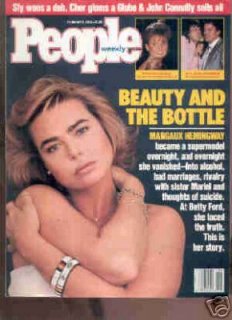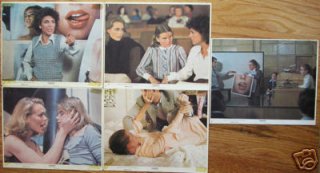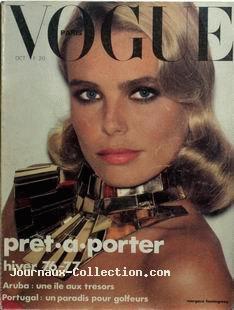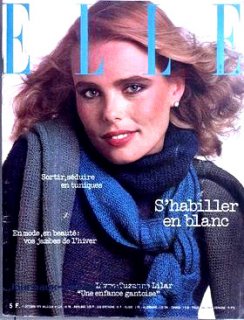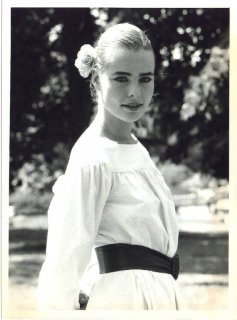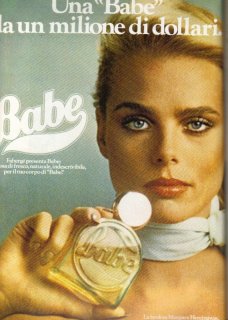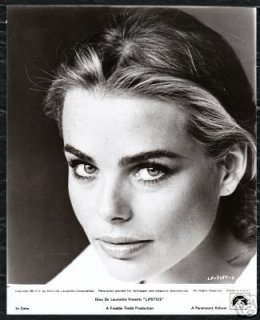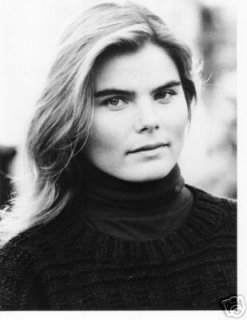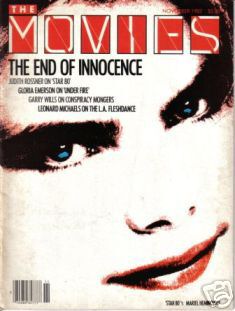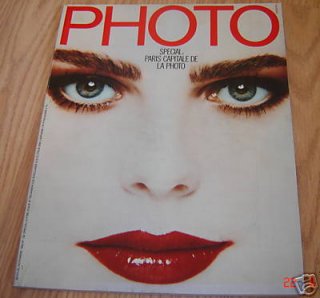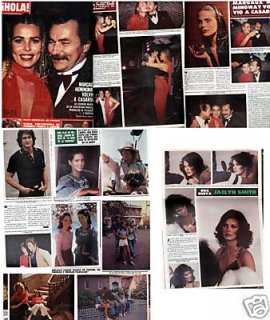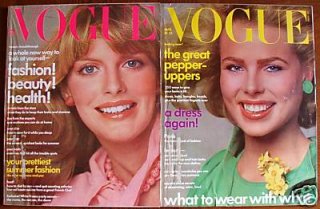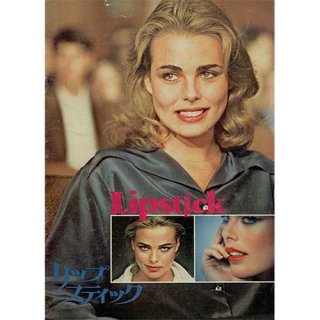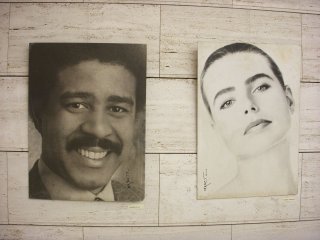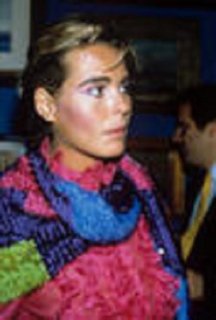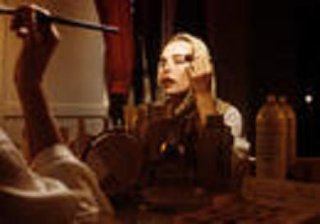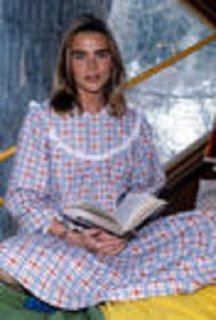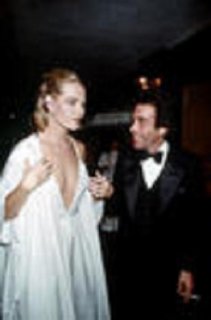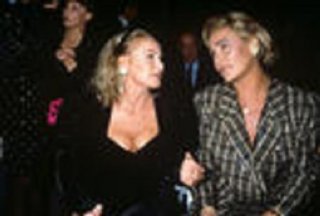You are using an out of date browser. It may not display this or other websites correctly.
You should upgrade or use an alternative browser.
You should upgrade or use an alternative browser.
Margaux Hemingway
- Thread starter alicia753
- Start date
bullspress
Photoshoot 1994.
One of the last ones
Photoshoot 1994.
One of the last ones

Attachments
-
 tn160CADD0IV9.jpg3.7 KB · Views: 74
tn160CADD0IV9.jpg3.7 KB · Views: 74 -
 tn160CACYRQEA.jpg4.1 KB · Views: 71
tn160CACYRQEA.jpg4.1 KB · Views: 71 -
 tn160CACY76HL.jpg4.3 KB · Views: 71
tn160CACY76HL.jpg4.3 KB · Views: 71 -
 tn160CACLKXQY.jpg4.4 KB · Views: 74
tn160CACLKXQY.jpg4.4 KB · Views: 74 -
 tn160CA62K218.jpg4.1 KB · Views: 72
tn160CA62K218.jpg4.1 KB · Views: 72 -
 tn160CAZUQB06.jpg3.9 KB · Views: 71
tn160CAZUQB06.jpg3.9 KB · Views: 71 -
 tn160CAY5TDAB.jpg4.2 KB · Views: 73
tn160CAY5TDAB.jpg4.2 KB · Views: 73 -
 tn160CAP7U9NV.jpg3.9 KB · Views: 73
tn160CAP7U9NV.jpg3.9 KB · Views: 73 -
 tn160CANLA775.jpg4.9 KB · Views: 71
tn160CANLA775.jpg4.9 KB · Views: 71
rex
Continuing
Continuing
Attachments
-
 55852b.jpg18.7 KB · Views: 7
55852b.jpg18.7 KB · Views: 7 -
 1995_1996.jpg12 KB · Views: 6
1995_1996.jpg12 KB · Views: 6 -
 1990s_3.jpg11.4 KB · Views: 6
1990s_3.jpg11.4 KB · Views: 6 -
 1990s_2.jpg13.6 KB · Views: 10
1990s_2.jpg13.6 KB · Views: 10 -
 1990s.jpg11.9 KB · Views: 8
1990s.jpg11.9 KB · Views: 8 -
 154063a.jpg18.1 KB · Views: 9
154063a.jpg18.1 KB · Views: 9 -
 69536a.jpg21.3 KB · Views: 14
69536a.jpg21.3 KB · Views: 14 -
 55852k.jpg20.4 KB · Views: 9
55852k.jpg20.4 KB · Views: 9 -
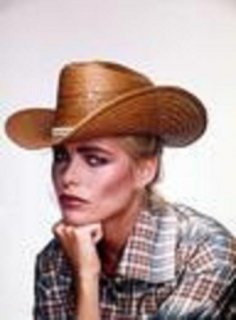 63909a.jpg18.7 KB · Views: 9
63909a.jpg18.7 KB · Views: 9 -
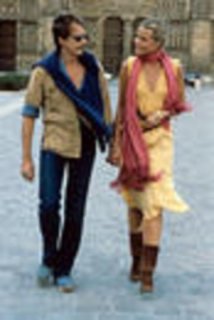 79689a.jpg18.8 KB · Views: 9
79689a.jpg18.8 KB · Views: 9
people
A Life Eclipsed
By Karen S. Schneider
Margaux Hemingway Burned Bright in the '70s as a Model, Actress and Club-Hopper, but in Her 41 Years She Never Broke Free of An Inner Pain

From PEOPLE Magazine
NEIGHBORS AND FRIENDS SENSED SOMETHING WAS wrong. One woman was struck by a troubled tone she heard when she chatted with Margaux Hemingway on June 26 outside her Santa Monica studio apartment. Hemingway's longtime friend, chiropractor Caren Elin, says she "felt a sense of urgency" when the actress and former model paged her two days later. "It turned out it was a minor question," Elin says, "but she doesn't usually page me with 'help me.' " Another neighbor did a double take when he passed the statuesque beauty on the street the next day. "She looked disturbed and haggard," says 32-year-old screenwriter Peter Osterlund. "I thought it was sad, and then I forgot about it."
But Judy Stabile couldn't forget. Her good friend had much to be happy about: Hemingway loved the small but sunny apartment she had moved into just three weeks earlier. And she had real hopes that her stint hosting Wild Guide, an outdoor adventure series scheduled to air next fall on the Discovery Channel, would kick-start her acting career. Still, for the past few weeks, when Stabile and other friends went out to dinner with Hemingway, or to a local club to hear music, or just talked on the phone, she seemed strangely forlorn. "What's going on?" her friend, talent agent Sandy Mirisch, would ask. "Oh, I'm not feeling so good," Hemingway would respond quietly.
When Hemingway didn't return her phone calls last week, Stabile drove to the former model's home. Outside she saw Hemingway's white Ford Bronco—with Idaho plates and a parking pass from the Pritikin Diet Center—parked on the street. After Stabile's knocking went unanswered, she found a ladder, climbed it and looked in the window. There was her friend, lying on the bed, her hands folded over her nightgown. Stabile then asked two construction workers to go inside. "They broke in through the door and quickly came out," Stabile recalls sadly. "They said, 'She's gone.' "
Just what went wrong in the last moments of Hemingway's life was initially unclear. Visions of the violent death of her famous grandfather, Ernest—who 35 years ago this month put an Abercrombie & Fitch shotgun to his head in a hallway of his Ketchum, Idaho, home and pulled the trigger at age 61—hover uncomfortably in the thoughts of some friends suspecting another Hemingway had committed suicide. The Santa Monica police found no signs of forcible entry or foul play. As of press time, the results of an autopsy were inconclusive, but some close friends believe Hemingway must have suffered a fatal attack of epilepsy, a disease she had struggled with since childhood. Says Elin: "I hope she died a natural death in a peaceful way."
For much of her life, though, peace had eluded her. The spirit of her great and troubled grandfather flickered in the headstrong little girl fly-fishing in the mountains near her home in Ketchum 30 years ago—just as it did in the strapping six-foot woman who squealed with delight on a Ferris wheel in Santa Monica only a few weeks ago. Margaux had the true Hemingway highs and lows—winning a million-dollar contract as the fresh-faced image behind Fabergé's Babe perfume in 1975, then losing it—along with a lot of sleep and dignity—as a perpetually sloshed member of Manhattan's quasi-decadent Studio 54 set.
A Life Eclipsed
By Karen S. Schneider
Margaux Hemingway Burned Bright in the '70s as a Model, Actress and Club-Hopper, but in Her 41 Years She Never Broke Free of An Inner Pain

From PEOPLE Magazine
NEIGHBORS AND FRIENDS SENSED SOMETHING WAS wrong. One woman was struck by a troubled tone she heard when she chatted with Margaux Hemingway on June 26 outside her Santa Monica studio apartment. Hemingway's longtime friend, chiropractor Caren Elin, says she "felt a sense of urgency" when the actress and former model paged her two days later. "It turned out it was a minor question," Elin says, "but she doesn't usually page me with 'help me.' " Another neighbor did a double take when he passed the statuesque beauty on the street the next day. "She looked disturbed and haggard," says 32-year-old screenwriter Peter Osterlund. "I thought it was sad, and then I forgot about it."
But Judy Stabile couldn't forget. Her good friend had much to be happy about: Hemingway loved the small but sunny apartment she had moved into just three weeks earlier. And she had real hopes that her stint hosting Wild Guide, an outdoor adventure series scheduled to air next fall on the Discovery Channel, would kick-start her acting career. Still, for the past few weeks, when Stabile and other friends went out to dinner with Hemingway, or to a local club to hear music, or just talked on the phone, she seemed strangely forlorn. "What's going on?" her friend, talent agent Sandy Mirisch, would ask. "Oh, I'm not feeling so good," Hemingway would respond quietly.
When Hemingway didn't return her phone calls last week, Stabile drove to the former model's home. Outside she saw Hemingway's white Ford Bronco—with Idaho plates and a parking pass from the Pritikin Diet Center—parked on the street. After Stabile's knocking went unanswered, she found a ladder, climbed it and looked in the window. There was her friend, lying on the bed, her hands folded over her nightgown. Stabile then asked two construction workers to go inside. "They broke in through the door and quickly came out," Stabile recalls sadly. "They said, 'She's gone.' "
Just what went wrong in the last moments of Hemingway's life was initially unclear. Visions of the violent death of her famous grandfather, Ernest—who 35 years ago this month put an Abercrombie & Fitch shotgun to his head in a hallway of his Ketchum, Idaho, home and pulled the trigger at age 61—hover uncomfortably in the thoughts of some friends suspecting another Hemingway had committed suicide. The Santa Monica police found no signs of forcible entry or foul play. As of press time, the results of an autopsy were inconclusive, but some close friends believe Hemingway must have suffered a fatal attack of epilepsy, a disease she had struggled with since childhood. Says Elin: "I hope she died a natural death in a peaceful way."
For much of her life, though, peace had eluded her. The spirit of her great and troubled grandfather flickered in the headstrong little girl fly-fishing in the mountains near her home in Ketchum 30 years ago—just as it did in the strapping six-foot woman who squealed with delight on a Ferris wheel in Santa Monica only a few weeks ago. Margaux had the true Hemingway highs and lows—winning a million-dollar contract as the fresh-faced image behind Fabergé's Babe perfume in 1975, then losing it—along with a lot of sleep and dignity—as a perpetually sloshed member of Manhattan's quasi-decadent Studio 54 set.
continuing
Like her grandfather, too, Hemingway suffered from bouts of clinical depression, one of which landed her in an Idaho psychiatric hospital in late 1994. And she carried on another family tradition—carrying on with her family. She "couldn't stand" her mother, Puck, for most of her life, she told PEOPLE in 1994. (They had reconciled by the time her mother died of cancer in 1988.) She admitted feeling intense competition with her younger sister, the actress Mariel Hemingway, 34. And when several years ago she went public with the statement that her godfather had molested her as a child, both her father, Jack, and her stepmother, Angela, 47, all but stopped speaking to her. "Jack and I did not talk to her for two years," Angela told PEOPLE last year. "She constantly lies. The whole family won't have anything to do with her. She's nothing but an angry woman."
When Hemingway's former agent David Mirisch telephoned her father and stepmother with the news of her death on July 1, "they didn't say much," he says, but sister Mariel, who starred in TV's Central Park West last season, "cried quite heavily." "Obviously," says Steve Crisman, Mariel's husband since 1984, "everyone's very depressed." There were problems, like in any family, Crisman says, "but there was a lot of love too. She was a very sweet, full-of-life woman," he adds. "She was on a search of some sort, and it was not always easy."
But it was rarely dull. Hemingway's story begins one night in Portland, Ore., when, in an amorous mood fueled by a bottle of Château Margaux wine, Puck and Jack (Ernest's oldest son, then trying to make a living as an investment counselor) conceived their second child. More than a decade later, the family—including Margaux, her older sister Joan, now 46, and Mariel—moved to the then-sleepy town of Ketchum (pop. 2,500), where Jack became a Fish and Game Commissioner.
Like her grandfather, too, Hemingway suffered from bouts of clinical depression, one of which landed her in an Idaho psychiatric hospital in late 1994. And she carried on another family tradition—carrying on with her family. She "couldn't stand" her mother, Puck, for most of her life, she told PEOPLE in 1994. (They had reconciled by the time her mother died of cancer in 1988.) She admitted feeling intense competition with her younger sister, the actress Mariel Hemingway, 34. And when several years ago she went public with the statement that her godfather had molested her as a child, both her father, Jack, and her stepmother, Angela, 47, all but stopped speaking to her. "Jack and I did not talk to her for two years," Angela told PEOPLE last year. "She constantly lies. The whole family won't have anything to do with her. She's nothing but an angry woman."
When Hemingway's former agent David Mirisch telephoned her father and stepmother with the news of her death on July 1, "they didn't say much," he says, but sister Mariel, who starred in TV's Central Park West last season, "cried quite heavily." "Obviously," says Steve Crisman, Mariel's husband since 1984, "everyone's very depressed." There were problems, like in any family, Crisman says, "but there was a lot of love too. She was a very sweet, full-of-life woman," he adds. "She was on a search of some sort, and it was not always easy."
But it was rarely dull. Hemingway's story begins one night in Portland, Ore., when, in an amorous mood fueled by a bottle of Château Margaux wine, Puck and Jack (Ernest's oldest son, then trying to make a living as an investment counselor) conceived their second child. More than a decade later, the family—including Margaux, her older sister Joan, now 46, and Mariel—moved to the then-sleepy town of Ketchum (pop. 2,500), where Jack became a Fish and Game Commissioner.
But as Margaux told PEOPLE in 1988, the turning point of her life came at the Plaza Hotel in New York City in 1974, when the 19-year-old high school graduate, working for a Ketchum-based PR firm, tagged along on a business trip to meet a boxing promoter. "I was basically a little s--t in cowboy boots going 'Yippie skippie' and 'Yahoo' with a big grin," she recalled years later. The small-town routine—and perhaps her big-time name—worked wonders on one Errol Wetson, a hamburger-chain heir and marketing entrepreneur 14 years her senior, who spied her sipping tea in the hotel's Palm Court. "He knocked on the door of my suite with a rose and a bottle of champagne," she said, "and I fell in love."
Four months later, Margaux moved to Manhattan—and into Wetson's apartment. "He started thinking of himself as my Svengali," she said. "He told me what colors to wear and to cover my legs because they were too heavy." He took her to the right parties and, most important, introduced her to the folks at Fabergé. Within a year, Hemingway was on the covers of Vogue and TIME magazine—and hanging out with Halston, Liza Minnelli and Bianca Jagger.
Back in Ketchum, her family was taking Margaux's rapid rise in stride. Her big sister, nicknamed Muffet, declared her intention to move to Manhattan and try a little modeling herself. (Nothing came of the plan.) Her mother declared the hullabaloo "exciting." Mary Hemingway, Ernest's fourth and last wife, reveled in Margaux's free spirit. "I shacked up with Ernest for years before we were married," his widow, who died in 1986, told Newsweek in 1975. And, in the same article, Margaux's father chided his blossoming daughter: "Any fatheadedness will not be tolerated."
But fatheadedness wasn't the problem; insecurity was. "I was in awe of that whole Halston-Liza Minnelli crowd," Hemingway told PEOPLE in 1988. "To me they were the real celebrities, and! was just a girl from Idaho." She turned easily to alcohol and marijuana to loosen up. "In my grandfather's time it was a virtue to drink a lot and never show it," she said. "And like him, I wanted to live my life to the fullest, with gusto. I always thought alcohol would give me the strength and courage to do whatever I wanted."
It didn't. Hemingway married Wet-son in 1975, but their relationship soon crumbled. "He never seemed to be able to hold a job other than advising me on important issues such as my wardrobe," she said. Her life took another difficult turn the next year, when she landed a role in Lipstick, a thriller about a model who gets raped by a music teacher. The critics panned her and the movie but praised Mariel, then only 14, whom Margaux had suggested for the role of her sister. "It was as if people were tired of me and gave her all the attention," she said. "I buried my feelings because I was taught it was Hemingwayesque to take your blows and walk stoically through them."
As her marriage to Wetson unraveled (they divorced in 1978), and her sister's career took off (Mariel won raves for her role as Woody Allen's teenage mistress in 1979's Manhattan), Hemingway turned even more to alcohol and drugs. In 1979 she married Venezuelan film director Bernard "Baron" Foucher, whom she had met and fallen for while still married to Wetson, and moved her fast-lane life across the Atlantic. The couple lived for more than a year in Paris, often staying at the flashy Nova Park Hotel. A Paris socialite recalls that "Margaux would talk very loudly about things you don't normally hear in polite society, about her sex life with Bernard." She spent money like a drunken sailor too. "I had no sense of finances," Hemingway said, "and was deeply in debt."
Four months later, Margaux moved to Manhattan—and into Wetson's apartment. "He started thinking of himself as my Svengali," she said. "He told me what colors to wear and to cover my legs because they were too heavy." He took her to the right parties and, most important, introduced her to the folks at Fabergé. Within a year, Hemingway was on the covers of Vogue and TIME magazine—and hanging out with Halston, Liza Minnelli and Bianca Jagger.
Back in Ketchum, her family was taking Margaux's rapid rise in stride. Her big sister, nicknamed Muffet, declared her intention to move to Manhattan and try a little modeling herself. (Nothing came of the plan.) Her mother declared the hullabaloo "exciting." Mary Hemingway, Ernest's fourth and last wife, reveled in Margaux's free spirit. "I shacked up with Ernest for years before we were married," his widow, who died in 1986, told Newsweek in 1975. And, in the same article, Margaux's father chided his blossoming daughter: "Any fatheadedness will not be tolerated."
But fatheadedness wasn't the problem; insecurity was. "I was in awe of that whole Halston-Liza Minnelli crowd," Hemingway told PEOPLE in 1988. "To me they were the real celebrities, and! was just a girl from Idaho." She turned easily to alcohol and marijuana to loosen up. "In my grandfather's time it was a virtue to drink a lot and never show it," she said. "And like him, I wanted to live my life to the fullest, with gusto. I always thought alcohol would give me the strength and courage to do whatever I wanted."
It didn't. Hemingway married Wet-son in 1975, but their relationship soon crumbled. "He never seemed to be able to hold a job other than advising me on important issues such as my wardrobe," she said. Her life took another difficult turn the next year, when she landed a role in Lipstick, a thriller about a model who gets raped by a music teacher. The critics panned her and the movie but praised Mariel, then only 14, whom Margaux had suggested for the role of her sister. "It was as if people were tired of me and gave her all the attention," she said. "I buried my feelings because I was taught it was Hemingwayesque to take your blows and walk stoically through them."
As her marriage to Wetson unraveled (they divorced in 1978), and her sister's career took off (Mariel won raves for her role as Woody Allen's teenage mistress in 1979's Manhattan), Hemingway turned even more to alcohol and drugs. In 1979 she married Venezuelan film director Bernard "Baron" Foucher, whom she had met and fallen for while still married to Wetson, and moved her fast-lane life across the Atlantic. The couple lived for more than a year in Paris, often staying at the flashy Nova Park Hotel. A Paris socialite recalls that "Margaux would talk very loudly about things you don't normally hear in polite society, about her sex life with Bernard." She spent money like a drunken sailor too. "I had no sense of finances," Hemingway said, "and was deeply in debt."
In 1981 she got the idea of making a documentary with Foucher about her grandfather. But after several trips to Cuba to interview the writer's friends and acquaintances, she realized the project was in a chaotic state. "I became very depressed," she said years later. "No one was interested in what I had to say, and everything seemed like it was out of control." In 1985 she called off the project, divorced Foucher—and dived head-first into despair. "I drank more and more and was slowly killing myself with alcohol," she recalled. "My thoughts were erratic, and I had trouble with my memory. I thought about suicide periodically, especially when I was drinking heavily."
The previous year, Hemingway had injured herself skiing in Austria; during her nine-month recovery she gained 75 pounds and sank deeper into depression. A 28-day stay at the Betty Ford Center in 1987 probably saved her life. Emerging trim and looking healthy, she devoted herself to running, yoga, painting, singing and to cooking dinners in the Manhattan apartment she shared with Stuart Sundlun, a businessman she had met on a blind date before entering rehab in 1987. But she was also anxious to resume her acting career, and when her role in the 1990 French movie Love in C Minor failed to gain Hollywood's attention, she did what many a struggling actress has done: posed nude for Playboy.
Her centerfold helped pay off the $900,000 in back taxes she owed the IRS but led nowhere. After she and Sundlun broke up in the early '90s, Hemingway turned her attention to what she called healing her spirit. She consulted with a Cheyenne Indian medicine man. She learned about the shamanic art of the Northwest Coast Indians. She had training in the huna philosophy of the Hawaiian kahunas. And in 1993 she began working with a network of chiropractors to treat her lifelong battle with dyslexia, her epilepsy and her bulimia, a problem from her modeling days. "I needed to go inside and clear the blockages," she told PEOPLE in 1994, "because nothing was coming to me, no jobs, no work."
In some ways, Hemingway did seem at peace. "She was a real phenomenal person," says Sundlun, who remained a friend. "She had a light touch on a heavy life." Model Cheryl Tiegs, a friend since the high times of the '70s, warmly remembers, "She was totally into the great outdoors. That was her main interest. She would come out to my house in Montauk [N.Y.] and sit on the beach, communing with the sea gulls. Everyone would come in the house and whisper and think it was kooky." Her unusual ways got a similarly affectionate reaction just two months ago at the Doral Saturnia spa in Miami, where she was the celebrity guest at a PEOPLE magazine function. "We'd all be yapping, and all of a sudden you'd address a question to Margaux, and she'd have her head down and her hands together, praying over her food," says PEOPLE editorial projects manager Louise Lague. "There was something spiritual going on."
In 1994, in pursuit of even greater spirituality, Hemingway took a trip to India, where she spent two months visiting holy sites. But according to Dr. Elin, the trip went badly. "Some sort of a breakdown happened over there," says Elin. "We don't know if she had a [epileptic] seizure followed by a breakdown or what. But whatever happened, the people there were unaccustomed to her condition, and she supposedly spent some time in jail. We eventually got her back, and she was hospitalized."
According to the Toronto Star, it was her father who consulted a psychiatrist and was instrumental in getting her treatment at a private clinic in Twin Falls, Idaho. But the crisis did not break the family impasse. "She's blaming Mariel or me or Jack [for her hospitalization]," Angela told PEOPLE soon after Hemingway was released early in 1995. "It's everybody else's fault. She's 40 years old and she's got to take responsibility for her life."
Sadly, now, she will never get that chance. Whatever the cause of death, Hemingway seemed confused in her final hours. At around 4:30 on Friday, June 28, she called Elin and left a message on her answering machine. "She didn't sound okay," says Elin. "She was slurring. She was just rambling. Her last sentence to me was, 'God loves you, God loves you, and I love you too.' " She had tried valiantly to climb back from the depths of depression, but clearly the former million-dollar model—whose most recent gigs included making infomercials for home-improvement products, promoting the Psychic hotline and filming straight-to-video films for a relatively measly $35,000 or so a pop—still had a way to travel. Last week the door to the Santa Monica apartment Hemingway hoped would be home to happier times swung open after the police had left. On the balcony a potted fern was blowing in the breeze. Unpacked boxes still stood on the floor. "It's very difficult when people don't want you anymore," says Elin. "She was just a gentle loving soul who got lost in fame and fortune."
The previous year, Hemingway had injured herself skiing in Austria; during her nine-month recovery she gained 75 pounds and sank deeper into depression. A 28-day stay at the Betty Ford Center in 1987 probably saved her life. Emerging trim and looking healthy, she devoted herself to running, yoga, painting, singing and to cooking dinners in the Manhattan apartment she shared with Stuart Sundlun, a businessman she had met on a blind date before entering rehab in 1987. But she was also anxious to resume her acting career, and when her role in the 1990 French movie Love in C Minor failed to gain Hollywood's attention, she did what many a struggling actress has done: posed nude for Playboy.
Her centerfold helped pay off the $900,000 in back taxes she owed the IRS but led nowhere. After she and Sundlun broke up in the early '90s, Hemingway turned her attention to what she called healing her spirit. She consulted with a Cheyenne Indian medicine man. She learned about the shamanic art of the Northwest Coast Indians. She had training in the huna philosophy of the Hawaiian kahunas. And in 1993 she began working with a network of chiropractors to treat her lifelong battle with dyslexia, her epilepsy and her bulimia, a problem from her modeling days. "I needed to go inside and clear the blockages," she told PEOPLE in 1994, "because nothing was coming to me, no jobs, no work."
In some ways, Hemingway did seem at peace. "She was a real phenomenal person," says Sundlun, who remained a friend. "She had a light touch on a heavy life." Model Cheryl Tiegs, a friend since the high times of the '70s, warmly remembers, "She was totally into the great outdoors. That was her main interest. She would come out to my house in Montauk [N.Y.] and sit on the beach, communing with the sea gulls. Everyone would come in the house and whisper and think it was kooky." Her unusual ways got a similarly affectionate reaction just two months ago at the Doral Saturnia spa in Miami, where she was the celebrity guest at a PEOPLE magazine function. "We'd all be yapping, and all of a sudden you'd address a question to Margaux, and she'd have her head down and her hands together, praying over her food," says PEOPLE editorial projects manager Louise Lague. "There was something spiritual going on."
In 1994, in pursuit of even greater spirituality, Hemingway took a trip to India, where she spent two months visiting holy sites. But according to Dr. Elin, the trip went badly. "Some sort of a breakdown happened over there," says Elin. "We don't know if she had a [epileptic] seizure followed by a breakdown or what. But whatever happened, the people there were unaccustomed to her condition, and she supposedly spent some time in jail. We eventually got her back, and she was hospitalized."
According to the Toronto Star, it was her father who consulted a psychiatrist and was instrumental in getting her treatment at a private clinic in Twin Falls, Idaho. But the crisis did not break the family impasse. "She's blaming Mariel or me or Jack [for her hospitalization]," Angela told PEOPLE soon after Hemingway was released early in 1995. "It's everybody else's fault. She's 40 years old and she's got to take responsibility for her life."
Sadly, now, she will never get that chance. Whatever the cause of death, Hemingway seemed confused in her final hours. At around 4:30 on Friday, June 28, she called Elin and left a message on her answering machine. "She didn't sound okay," says Elin. "She was slurring. She was just rambling. Her last sentence to me was, 'God loves you, God loves you, and I love you too.' " She had tried valiantly to climb back from the depths of depression, but clearly the former million-dollar model—whose most recent gigs included making infomercials for home-improvement products, promoting the Psychic hotline and filming straight-to-video films for a relatively measly $35,000 or so a pop—still had a way to travel. Last week the door to the Santa Monica apartment Hemingway hoped would be home to happier times swung open after the police had left. On the balcony a potted fern was blowing in the breeze. Unpacked boxes still stood on the floor. "It's very difficult when people don't want you anymore," says Elin. "She was just a gentle loving soul who got lost in fame and fortune."
SusanSuperstar
LOVE
- Joined
- Sep 19, 2005
- Messages
- 5,980
- Reaction score
- 5
I love Margeaux....I was so blown away when I first saw a picture of her, the one by Scavullo of her sitting beside a pool. She was amazing!
time.com
Monday, Jun. 16, 1975

Nine months ago, Margaux Hemingway stepped off a plane at New York's La Guardia Airport. Like other immigrants to the Big Apple, she was a little green. She had the blessing of the folks back home in Ketchum, Idaho, a happy disposition and a waiting boy friend. As a "hotdog skier" and sometime soccer player, and with only a year of odd jobs behind her, she did not have the exact skills suited to Manhattan's job market. But her grandfather had been Ernest Hemingway, so she had a well-known name. And though some of the guys in Sun Valley used to call her "Pigpen," she was tall and blonde. Anyway, a girl can dream, can't she?
Within a month, Margaux's name was popping up all over the place. Within two, she was picking up top-scale fees for modeling gigs ($100 an hour). By the time her 20th birthday came round in February, Margaux had posed for a Vogue cover, was starring at celebrity-jammed parties, and had announced her engagement to Boy Friend Errol Wetson. On the pop scales, Margaux was beginning to outrank even Mick Jagger. Clearly, something big was about to happen to Margaux. Sure enough, in the middle of May, just 249 days after her arrival in Manhattan, she landed the biggest advertising contract ever given to a woman: $1 million from Fabergé to promote a new, unnamed scent. Said Margaux simply: "It's the best, you guys."
Why Margaux? Well, the boys back home must have been short or myopic. Margaux is the American Sex Dream incarnate, a prairie Valkyrie, 6 ft. tall and 138 lbs. "I never saw such a big, marvelous, wide-eyed, warm girl," recalls Fashion Artist Joe Eula, one of her first mentors. "She just made me feel so good." Effortlessly, Margaux stands out in a gallery of fresh young faces, newcomers who are making their names in modeling, movies, ballet and in the exacting art of simply living well. They add up to an exhilarating crop of new beauties who light up the landscape in the U.S. and abroad.
Their chief distinction is variety. It used to be that every few years yielded a different image. In 1960 it was Jackie Kennedy's finishing-school polish, later Twiggy's innocent charm and the tomboyish Ali MacGraw. But increasingly women refuse to accept anyone else's beauty package. Today the one standard left is the camera's unblinking eye. Margaux is a photographer's ideal, and despite the trend to diversity, hers is the face of a generation, as recognizable and memorable as Lisa Fonssagrives and Jean Shrimpton. When Margaux has her hair wet and slicked back, Photographer Francesco Scavullo thinks she looks Etruscan. Says Designer Halston: "She has all the components to become a modern young superstar—openness, infectiousness, beauty and the ambition to follow through."
Monday, Jun. 16, 1975

Nine months ago, Margaux Hemingway stepped off a plane at New York's La Guardia Airport. Like other immigrants to the Big Apple, she was a little green. She had the blessing of the folks back home in Ketchum, Idaho, a happy disposition and a waiting boy friend. As a "hotdog skier" and sometime soccer player, and with only a year of odd jobs behind her, she did not have the exact skills suited to Manhattan's job market. But her grandfather had been Ernest Hemingway, so she had a well-known name. And though some of the guys in Sun Valley used to call her "Pigpen," she was tall and blonde. Anyway, a girl can dream, can't she?
Within a month, Margaux's name was popping up all over the place. Within two, she was picking up top-scale fees for modeling gigs ($100 an hour). By the time her 20th birthday came round in February, Margaux had posed for a Vogue cover, was starring at celebrity-jammed parties, and had announced her engagement to Boy Friend Errol Wetson. On the pop scales, Margaux was beginning to outrank even Mick Jagger. Clearly, something big was about to happen to Margaux. Sure enough, in the middle of May, just 249 days after her arrival in Manhattan, she landed the biggest advertising contract ever given to a woman: $1 million from Fabergé to promote a new, unnamed scent. Said Margaux simply: "It's the best, you guys."
Why Margaux? Well, the boys back home must have been short or myopic. Margaux is the American Sex Dream incarnate, a prairie Valkyrie, 6 ft. tall and 138 lbs. "I never saw such a big, marvelous, wide-eyed, warm girl," recalls Fashion Artist Joe Eula, one of her first mentors. "She just made me feel so good." Effortlessly, Margaux stands out in a gallery of fresh young faces, newcomers who are making their names in modeling, movies, ballet and in the exacting art of simply living well. They add up to an exhilarating crop of new beauties who light up the landscape in the U.S. and abroad.
Their chief distinction is variety. It used to be that every few years yielded a different image. In 1960 it was Jackie Kennedy's finishing-school polish, later Twiggy's innocent charm and the tomboyish Ali MacGraw. But increasingly women refuse to accept anyone else's beauty package. Today the one standard left is the camera's unblinking eye. Margaux is a photographer's ideal, and despite the trend to diversity, hers is the face of a generation, as recognizable and memorable as Lisa Fonssagrives and Jean Shrimpton. When Margaux has her hair wet and slicked back, Photographer Francesco Scavullo thinks she looks Etruscan. Says Designer Halston: "She has all the components to become a modern young superstar—openness, infectiousness, beauty and the ambition to follow through."
continuing
Openness and a boggling spontaneity have made Margaux something more than a model, a pop personality. She may be too big for model clothes—her shoes are a size 9½—but she is so natural she makes soignée sound like a dirty word. Manhattan, which has made famous such gaudy eccentrics as Andy Warhol and Tiny Tim, is enchanted by the antics of a seemingly guileless hick. Even fashion's supreme arbiter, Diana Vreeland, renowned for her aphorisms ("Pink is the navy blue of India"), lapsed into hyperbole: "She has such energy of beauty—it just flashes out at you." Meanwhile, in her husky, baby-Carol Charming voice, Margaux was revealing that she had really been christened Margot. Then one night her parents told her she had been conceived after they had downed an exceptional vintage of Château Margaux. Voilà!
Nervous at her first interviews, Margaux snapped her fingers and came on with language and syntax baffling to anyone over 15. "You just keep snappin'," she would say. Growing more confident, she let out "Yippie-skippies" of pleasure and would growl "Rich, happy blues." As her bookings grew, Margaux cried, "Just t.c.b.—taking care of business!" Says Scavullo: "She talks a mile a minute. She chews gum until she gets in front of the camera; then we carry a silver spoon and platter to her and take the gum."
Margaux did pine for the great outdoors. "I saw The Four Musketeers and I wanted to fence," she said wistfully. She tried jogging around Central Park reservoir, but a band of urban guerrillas hounded her, yelling, "Hi, Shorty!" Yoga, she decided, was a suitably citified form of exercise. One evening she discovered a new position she thought would lengthen the lifeline in her hand. "I felt so energized," she beamed. "That's how I like to feel—healthy and energized."
That is how Margaux grew up in Idaho's spectacular Sun Valley, where her father Jack, Ernest's eldest son, settled down in 1967 after throwing over a career as a stockbroker. He is now a member of the state's fish and game commission. Jack and his wife Puck, a gourmet cook and an old friend of Julia Child's, brought up their three daughters—Margaux, Joan ("Muffet"), 25, and Mariel, 13—to hunt, fish, shoot and ski. Margaux had a prodigious appetite for Puck's meals too. As a result she suffers from "foodism." A plump bebopper, she felt the pangs of sibling rivalry when Muffet became the 1968 Idaho woman tennis champion and modeled some very sexy clothes in a local show. She was also an expert skier, who chose to become a ski clown, a reckless hotdogger. "Margaux never did like competition," says Jack, "and I think that's why she wasn't too interested in school."
Openness and a boggling spontaneity have made Margaux something more than a model, a pop personality. She may be too big for model clothes—her shoes are a size 9½—but she is so natural she makes soignée sound like a dirty word. Manhattan, which has made famous such gaudy eccentrics as Andy Warhol and Tiny Tim, is enchanted by the antics of a seemingly guileless hick. Even fashion's supreme arbiter, Diana Vreeland, renowned for her aphorisms ("Pink is the navy blue of India"), lapsed into hyperbole: "She has such energy of beauty—it just flashes out at you." Meanwhile, in her husky, baby-Carol Charming voice, Margaux was revealing that she had really been christened Margot. Then one night her parents told her she had been conceived after they had downed an exceptional vintage of Château Margaux. Voilà!
Nervous at her first interviews, Margaux snapped her fingers and came on with language and syntax baffling to anyone over 15. "You just keep snappin'," she would say. Growing more confident, she let out "Yippie-skippies" of pleasure and would growl "Rich, happy blues." As her bookings grew, Margaux cried, "Just t.c.b.—taking care of business!" Says Scavullo: "She talks a mile a minute. She chews gum until she gets in front of the camera; then we carry a silver spoon and platter to her and take the gum."
Margaux did pine for the great outdoors. "I saw The Four Musketeers and I wanted to fence," she said wistfully. She tried jogging around Central Park reservoir, but a band of urban guerrillas hounded her, yelling, "Hi, Shorty!" Yoga, she decided, was a suitably citified form of exercise. One evening she discovered a new position she thought would lengthen the lifeline in her hand. "I felt so energized," she beamed. "That's how I like to feel—healthy and energized."
That is how Margaux grew up in Idaho's spectacular Sun Valley, where her father Jack, Ernest's eldest son, settled down in 1967 after throwing over a career as a stockbroker. He is now a member of the state's fish and game commission. Jack and his wife Puck, a gourmet cook and an old friend of Julia Child's, brought up their three daughters—Margaux, Joan ("Muffet"), 25, and Mariel, 13—to hunt, fish, shoot and ski. Margaux had a prodigious appetite for Puck's meals too. As a result she suffers from "foodism." A plump bebopper, she felt the pangs of sibling rivalry when Muffet became the 1968 Idaho woman tennis champion and modeled some very sexy clothes in a local show. She was also an expert skier, who chose to become a ski clown, a reckless hotdogger. "Margaux never did like competition," says Jack, "and I think that's why she wasn't too interested in school."
continuing
Her parents encouraged her to try art school, but Margaux was too energized to buckle down and took off after a year for Europe. Her adventures were just as lively, if less genteel, than Lorelei Lee's. In Morocco, she was "sorta kidnaped" by a smuggling gang who made her into an unwitting hash courier. Fortunately, a friendly mechanic ("He was just snappin' ") sniffed out the fact that her car was mined with hash. Recalls Margaux: "It was really veggy" (translation: Margaux could not move or think).
"Margaux is neither domestic nor domesticated. She's a free spirit," says her father, now 51. Still, there was a stir last Christmas when, for the first time, Margaux brought a man home. He was Errol Wetson, 34, a second-generation entrepreneur, whose father ran a variety of concessions in the East. Errol's career has been bold but erratic. Since age 18, when he and his brother started Wetson's hamburger chain, he has bought and sold antique cars, run a trendy Manhattan restaurant called Le Drugstore, imported soft denim, and backed the TV show Kung Fu. One day last spring, he was sitting in his favorite place, the Plaza hotel's Palm Court, when he saw Margaux, who was in town for a skiing promotion gig. Their eyes locked. They have been in love ever since, and when Margaux arrived in New York last fall, they pooled their resources, rented a grungy Upper East Side pad and settled down to construct the Big Deal. Frequent reassuring trips to the Palm Court were necessary. "If things began to cave in or if we were confused, we would rush over there, sit at a table, and suddenly things became clearer," says Errol. Margaux says, "Errol has horns but he's an angel."
The Hemingways were at first cautious about Errol. But since that Christmas visit, Errol has been in close touch with Jack. Together with Margaux's agent Peggy Nestor, they set up the Fabergé deal, which runs until 1980 and may yield Margaux more than a million if she promotes other products for Fabergé as well.
She is hurt by the recurrent criticism that Errol has exploited her. "The other day," she says, "he came to me and gave me his share of the deal." When she got film offers, it was Errol who cautioned her to wait until she was ready. She plans to take acting lessons in preparation for a movie career, but first she and Errol are honeymooning in Europe and South America. Marriage may come later—or next week. Her younger sister Mariel is not so sure: "I don't know—Margaux is kinda crazy."
Her parents encouraged her to try art school, but Margaux was too energized to buckle down and took off after a year for Europe. Her adventures were just as lively, if less genteel, than Lorelei Lee's. In Morocco, she was "sorta kidnaped" by a smuggling gang who made her into an unwitting hash courier. Fortunately, a friendly mechanic ("He was just snappin' ") sniffed out the fact that her car was mined with hash. Recalls Margaux: "It was really veggy" (translation: Margaux could not move or think).
"Margaux is neither domestic nor domesticated. She's a free spirit," says her father, now 51. Still, there was a stir last Christmas when, for the first time, Margaux brought a man home. He was Errol Wetson, 34, a second-generation entrepreneur, whose father ran a variety of concessions in the East. Errol's career has been bold but erratic. Since age 18, when he and his brother started Wetson's hamburger chain, he has bought and sold antique cars, run a trendy Manhattan restaurant called Le Drugstore, imported soft denim, and backed the TV show Kung Fu. One day last spring, he was sitting in his favorite place, the Plaza hotel's Palm Court, when he saw Margaux, who was in town for a skiing promotion gig. Their eyes locked. They have been in love ever since, and when Margaux arrived in New York last fall, they pooled their resources, rented a grungy Upper East Side pad and settled down to construct the Big Deal. Frequent reassuring trips to the Palm Court were necessary. "If things began to cave in or if we were confused, we would rush over there, sit at a table, and suddenly things became clearer," says Errol. Margaux says, "Errol has horns but he's an angel."
The Hemingways were at first cautious about Errol. But since that Christmas visit, Errol has been in close touch with Jack. Together with Margaux's agent Peggy Nestor, they set up the Fabergé deal, which runs until 1980 and may yield Margaux more than a million if she promotes other products for Fabergé as well.
She is hurt by the recurrent criticism that Errol has exploited her. "The other day," she says, "he came to me and gave me his share of the deal." When she got film offers, it was Errol who cautioned her to wait until she was ready. She plans to take acting lessons in preparation for a movie career, but first she and Errol are honeymooning in Europe and South America. Marriage may come later—or next week. Her younger sister Mariel is not so sure: "I don't know—Margaux is kinda crazy."
continuing
Crazy like Napoleon. Margaux has picked up the fashion world and wrapped it round her little finger; she has tamed the press and subdued Madison Avenue. "It's like a fairy tale," she agrees. "But blah blah, woof woof, as Jimi Hendrix used to say." Says Miss Mary, Ernest Hemingway's widow (and Margaux's step-grandmother "She was such a nice healthy kid, I hope nothing spoils her, natch." About her publicity-hating grandfather, Margaux is admiringly respectful, exulting: "Grandpa's spirit's in my marrow." But she prefers people to realize that it is Margaux, not Ernest, who is the big name today. She is even getting over her fear of competition. When Joan came to New York recently to promote the movie Rosebud, for which she had helped write the original novel, Margaux talked up Muffet's forthcoming cookbook, Picnic Gourmet, to the press.
"She was such a nice healthy kid, I hope nothing spoils her, natch." About her publicity-hating grandfather, Margaux is admiringly respectful, exulting: "Grandpa's spirit's in my marrow." But she prefers people to realize that it is Margaux, not Ernest, who is the big name today. She is even getting over her fear of competition. When Joan came to New York recently to promote the movie Rosebud, for which she had helped write the original novel, Margaux talked up Muffet's forthcoming cookbook, Picnic Gourmet, to the press.
Now that she is rich and free, "the girl of the '70s," Margaux is moving from pop fame to superstardom. Her life seems to stretch ahead of her like a field of virgin snow. Margaux likes that terrain. Says she: "I love to ski in powder. Then I can look back and see my tracks alone—nobody else's at all."
Professional Beauties
Although Margaux is almost literally out of sight, she is not alone in the rather special world of professional beauties. Many make $100,000 a year or more from their looks. "You either have it or you don't," says Carrie Donovan of Harper's Bazaar. "A beauty must be able to project herself, be dramatic, an actress." Hollywood Starlet Deborah Raffin, 22, a lean blonde with almost cliché American looks, has projected herself with more effect on the covers of glossy magazines than in the movies. Picked at age 19 to play Liv Ullmann's daughter in 40 Carats, she also starred in the uproariously bad Once Is Not Enough. Deborah insists on being identified when she models. "She does it to build her name," says her husband-manager, Michael Viner. The Viners are a refreshingly naive couple in Beverly Hills. Deborah likes stuffed animals, and Michael, who is also a record producer, insists that no mention of hard drugs be made in any of the songs he produces. Deborah, too, has firm ideas. In Enough, she played January, the chick who matures with the help of alcohol and drugs, but she modified the role to a more normal adolescence. She also objects to nudity in films: "It violates my privacy." That stand prompted Co-Star Kirk Douglas to ostracize her on the set. He accused her of being frigid. "It seems funny now," says Deborah. "But at the time it took all my strength to hold back the tears. I never want anyone to think I'm one of the thousands of 'starlets' who will do anything to be in a movie."
Crazy like Napoleon. Margaux has picked up the fashion world and wrapped it round her little finger; she has tamed the press and subdued Madison Avenue. "It's like a fairy tale," she agrees. "But blah blah, woof woof, as Jimi Hendrix used to say." Says Miss Mary, Ernest Hemingway's widow (and Margaux's step-grandmother
 "She was such a nice healthy kid, I hope nothing spoils her, natch." About her publicity-hating grandfather, Margaux is admiringly respectful, exulting: "Grandpa's spirit's in my marrow." But she prefers people to realize that it is Margaux, not Ernest, who is the big name today. She is even getting over her fear of competition. When Joan came to New York recently to promote the movie Rosebud, for which she had helped write the original novel, Margaux talked up Muffet's forthcoming cookbook, Picnic Gourmet, to the press.
"She was such a nice healthy kid, I hope nothing spoils her, natch." About her publicity-hating grandfather, Margaux is admiringly respectful, exulting: "Grandpa's spirit's in my marrow." But she prefers people to realize that it is Margaux, not Ernest, who is the big name today. She is even getting over her fear of competition. When Joan came to New York recently to promote the movie Rosebud, for which she had helped write the original novel, Margaux talked up Muffet's forthcoming cookbook, Picnic Gourmet, to the press. Now that she is rich and free, "the girl of the '70s," Margaux is moving from pop fame to superstardom. Her life seems to stretch ahead of her like a field of virgin snow. Margaux likes that terrain. Says she: "I love to ski in powder. Then I can look back and see my tracks alone—nobody else's at all."
Professional Beauties
Although Margaux is almost literally out of sight, she is not alone in the rather special world of professional beauties. Many make $100,000 a year or more from their looks. "You either have it or you don't," says Carrie Donovan of Harper's Bazaar. "A beauty must be able to project herself, be dramatic, an actress." Hollywood Starlet Deborah Raffin, 22, a lean blonde with almost cliché American looks, has projected herself with more effect on the covers of glossy magazines than in the movies. Picked at age 19 to play Liv Ullmann's daughter in 40 Carats, she also starred in the uproariously bad Once Is Not Enough. Deborah insists on being identified when she models. "She does it to build her name," says her husband-manager, Michael Viner. The Viners are a refreshingly naive couple in Beverly Hills. Deborah likes stuffed animals, and Michael, who is also a record producer, insists that no mention of hard drugs be made in any of the songs he produces. Deborah, too, has firm ideas. In Enough, she played January, the chick who matures with the help of alcohol and drugs, but she modified the role to a more normal adolescence. She also objects to nudity in films: "It violates my privacy." That stand prompted Co-Star Kirk Douglas to ostracize her on the set. He accused her of being frigid. "It seems funny now," says Deborah. "But at the time it took all my strength to hold back the tears. I never want anyone to think I'm one of the thousands of 'starlets' who will do anything to be in a movie."
Similar Threads
Users who are viewing this thread
Total: 1 (members: 0, guests: 1)
New Posts
-
-
Interview Winter 2025 : Ariana Grande by Inez van Lamsweerde & Vinoodh Matadin (16 Viewers)
- Latest: vogue28
-
-
-

